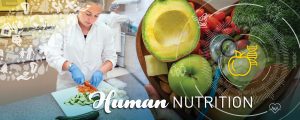The Algae Products Market was valued at $3.28 billion in 2023. This market is expected to reach $6.01 billion by 2031, from an estimated $3.53 billion in 2024, at a CAGR of 7.9% during the forecast period 2024-2031.
Algae products encompass a diverse group of photosynthetic organisms, primarily found in marine and freshwater environments, and are widely utilized across various industries. One of the key trends shaping the algae products market is the rise of alternative protein sources, with algae emerging as a popular and sustainable option. These alternative proteins contribute to building a more resilient and efficient food system.
The major types of algae-derived products include hydrocolloids, carotenoids, lipids, and algae protein, which are extensively used in sectors such as food and beverages, nutraceuticals, cosmetics, and animal feed. Common algae extracts used across these industries come from seaweed, chlorella, spirulina, Dunaliella salina, and Haematococcus pluvialis.
Hydrocolloids, widely used in food, beverages, pharmaceuticals, and cosmetics, are primarily employed as functional ingredients to enhance the texture, consistency, and shelf life of products. They are especially popular in probiotic and zero-calorie foods. The growing demand for healthier, more nutritious food options is driving the increased use of hydrocolloids in food formulations.
Carotenoids, natural pigments found in algae, are increasingly used in cosmetics due to the rising preference for natural ingredient-based products. These compounds offer antioxidant, anti-inflammatory, and photoprotective benefits, making them valuable in formulations aimed at improving skin health and protection. Carotenoids are commonly found in sunscreens, anti-aging products, and skin repair treatments.
In addition, algae proteins, particularly from microalgae, are gaining recognition for their high nutritional value and bioactive properties. Spirulina, a well-known microalga, is becoming popular as a food ingredient due to its rich content of proteins, polyunsaturated fatty acids, pigments, and vitamins.
Download Sample Report Here @ https://www.meticulousresearch.com/download-sample-report/cp_id=3579
Growing Demand for Natural Food Colors Boosts Algae Product Utilization
Consumers’ increasing health consciousness and preference for eco-friendly products are driving the demand for natural foods globally. Algae have become a significant source of natural food colors, offering a sustainable alternative to synthetic options. Plant-based food colors not only enhance the visual appeal of food products but also improve their nutritional value without the negative effects of synthetic additives.
Food manufacturers are increasingly incorporating natural food colors to meet the growing demand for products made with natural ingredients. Natural colors can help restore the appearance of processed food and beverage products. In the U.S., the FDA has banned certain artificial color additives linked to cancer, further fueling the shift toward natural alternatives.
Spirulina, with its vivid blue-green hue, is widely used in confectionery and chewing gums. The U.S. FDA has approved spirulina extract as a natural blue coloring agent for food and beverage applications, making it the first natural blue food color to receive such approval. This has led to a growing demand for spirulina-based colors in the production of beverages, dairy products, and confectionery items. Other food categories, such as frostings, ice creams, dry beverage mixes, yogurt, and gelatin, also use spirulina extract as a natural blue colorant. Between 2014 and 2020, the volume of spirulina used in food and beverage applications increased fivefold, contributing to an average annual growth rate of 6.8% for the natural food coloring industry.
Astaxanthin, another natural pigment derived from Haematococcus pluvialis microalgae, is seeing increasing demand in the food industry. While synthetic astaxanthin is used by some manufacturers, concerns over its safety for direct human consumption have led to a preference for natural astaxanthin in high-end markets. Haematococcus pluvialis-derived astaxanthin is approved as a color additive for salmon feed and as a dietary supplement ingredient in several countries, including the U.S., Japan, and parts of Europe. This natural pigment is commonly used to impart a red-orange color to seafood, meat, poultry, dairy, and bakery products.
In conclusion, the rising demand for natural food colors is significantly driving the growth of the algae products market.
According to Meticulous Research®, the Algae Products Market is projected to reach $6.01 billion by 2031, growing at a compound annual growth rate (CAGR) of 7.9% from 2024 to 2031. In terms of volume, the market is expected to reach 509,648.6 tons by 2031, with a CAGR of 9.4% during the same period.
Quick Buy: https://www.meticulousresearch.com/Checkout/80090559
Contact:
Meticulous Market Research Pvt. Ltd.
1267 Willis St, Ste 200 Redding,
California, 96001, U.S.
USA: +1-646-781-8004
Europe : +44-203-868-8738
APAC: +91 744-7780008
Email- sales@meticulousresearch.com
Visit Our Website: https://www.meticulousresearch.com/
Connect with us on LinkedIn- https://www.linkedin.com/company/meticulous-research






